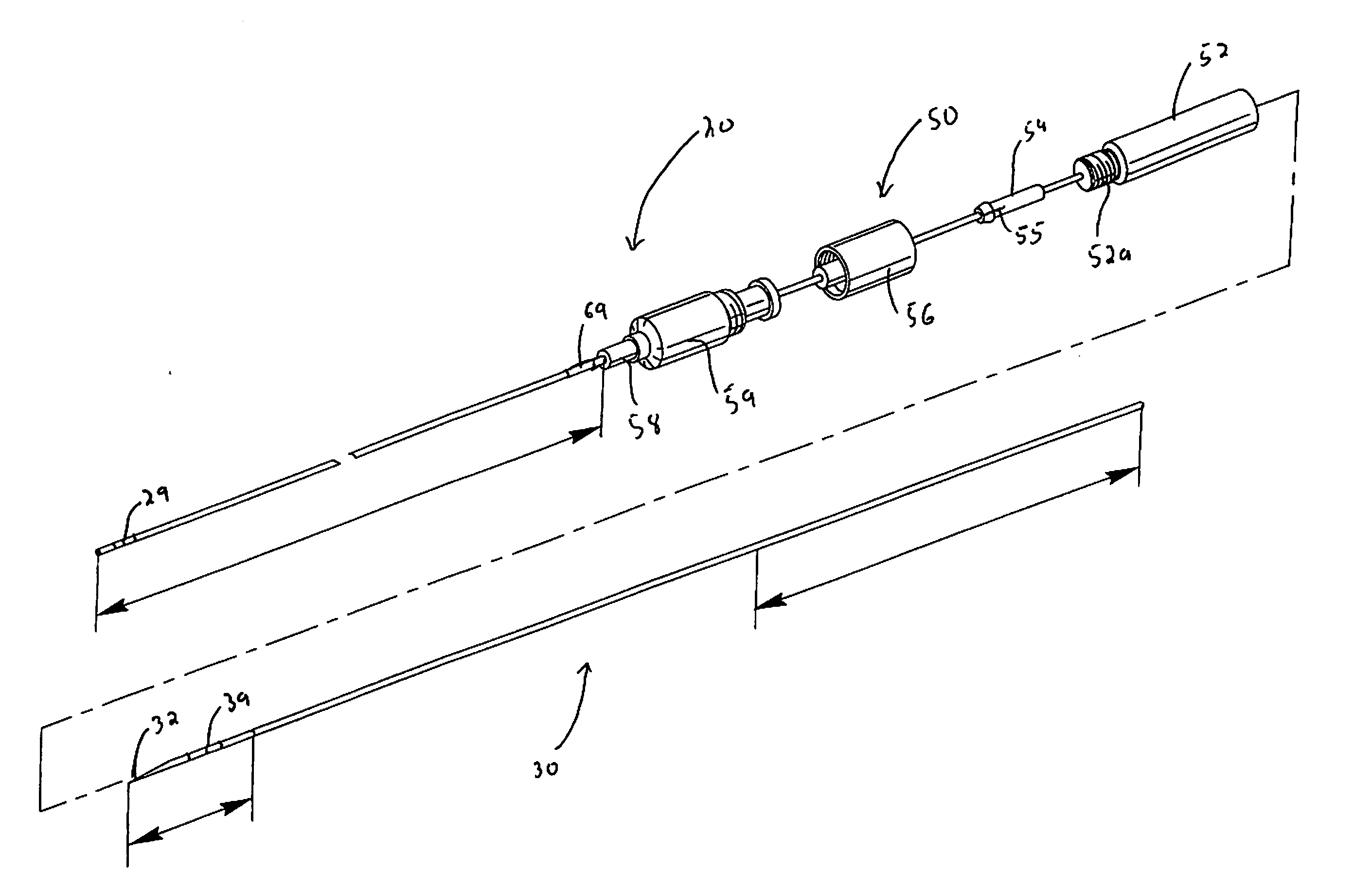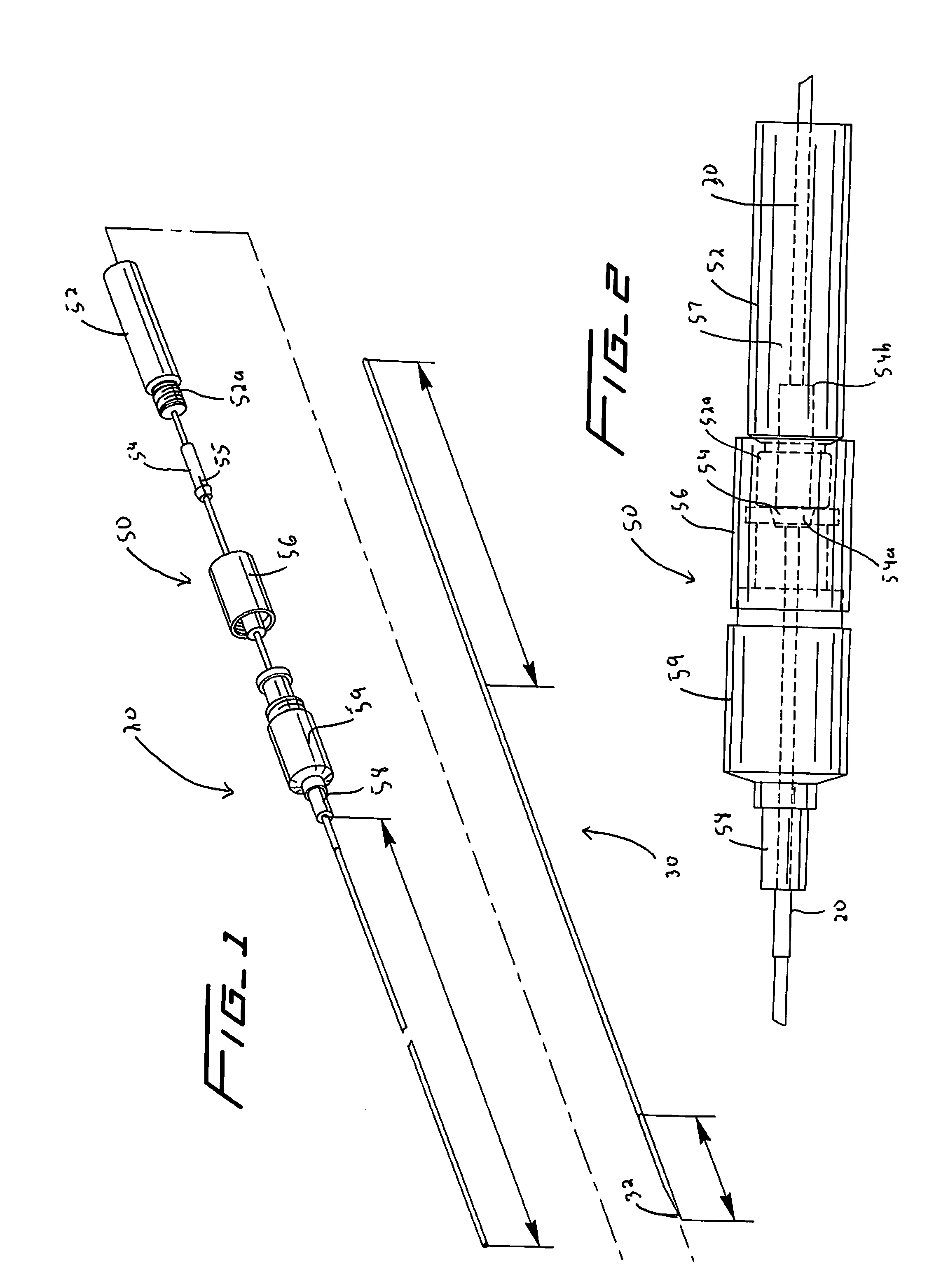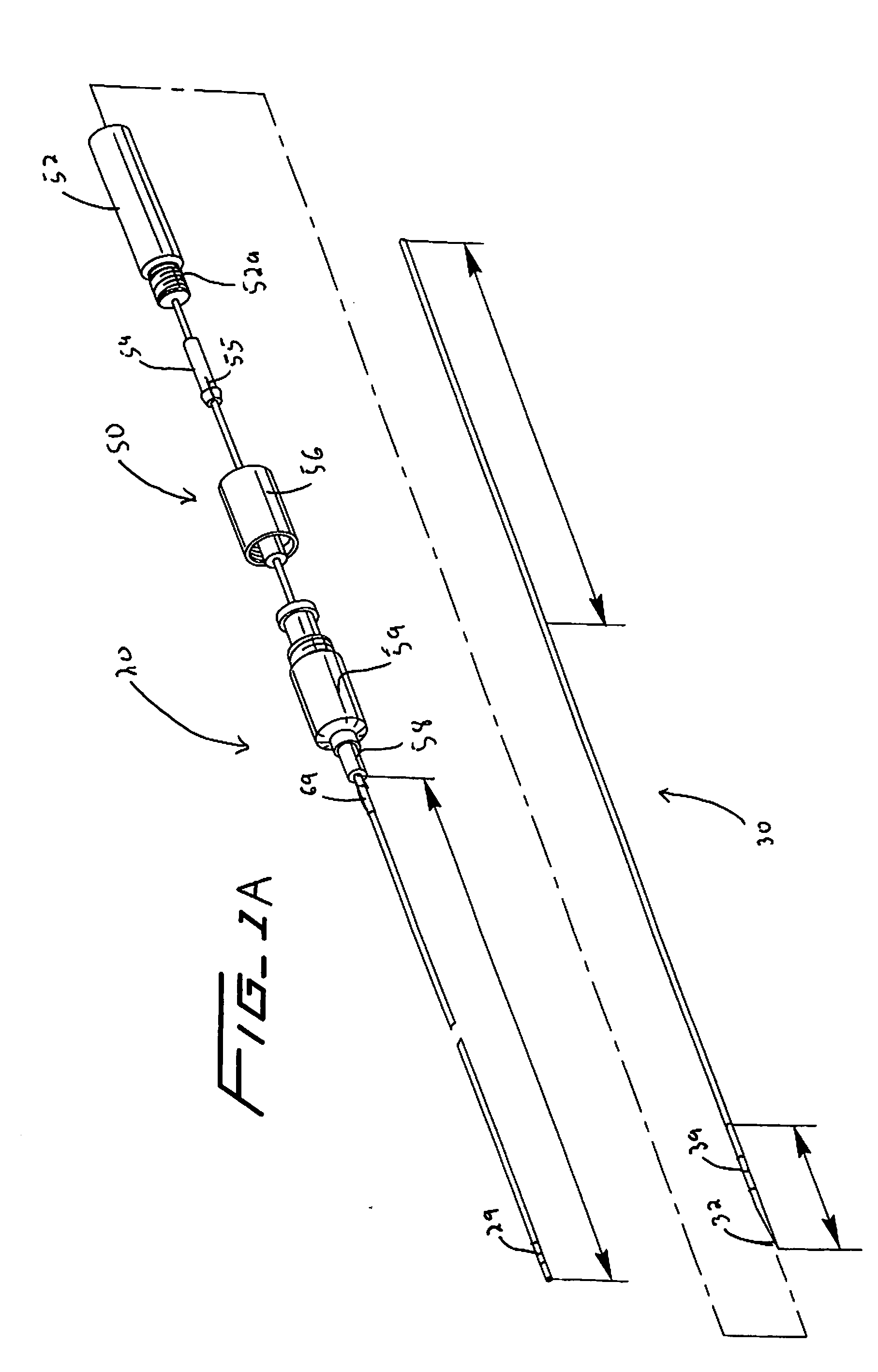Percutaneous Renal Access System
a technology of percutaneous puncture and access system, which is applied in the field of percutaneous puncture system, can solve the problems of increased bleeding risk of antegrade approach, high radiation exposure of procedure, and high skill intensity of antegrade approach
- Summary
- Abstract
- Description
- Claims
- Application Information
AI Technical Summary
Benefits of technology
Problems solved by technology
Method used
Image
Examples
Embodiment Construction
[0107]Referring now in detail to the drawings wherein like reference numerals identify similar or like components throughout the several views, FIGS. 1-22 illustrate various embodiments of the present invention. The present invention provides accessing as well as selecting a calyx under direct visualization utilizing an ureteroscope in order to create a nephrostomy tract for nephrostomy tube creation.
[0108]A puncture wire is advanced through a working channel of an ureteroscope which has been passed into the kidney in retrograde fashion. The puncture wire is then deployed from the ureteroscope working channel through a surgeon selected calyx and through the kidney and out the flank and skin in a retrograde fashion. This technique obviates the need for antegrade access to the calyx as antegrade access disadvantageously requires significant technical skill due to advancement into the “unknown calyx” and creates potential risks for the patient including relatively high radiation exposu...
PUM
 Login to View More
Login to View More Abstract
Description
Claims
Application Information
 Login to View More
Login to View More - R&D
- Intellectual Property
- Life Sciences
- Materials
- Tech Scout
- Unparalleled Data Quality
- Higher Quality Content
- 60% Fewer Hallucinations
Browse by: Latest US Patents, China's latest patents, Technical Efficacy Thesaurus, Application Domain, Technology Topic, Popular Technical Reports.
© 2025 PatSnap. All rights reserved.Legal|Privacy policy|Modern Slavery Act Transparency Statement|Sitemap|About US| Contact US: help@patsnap.com



